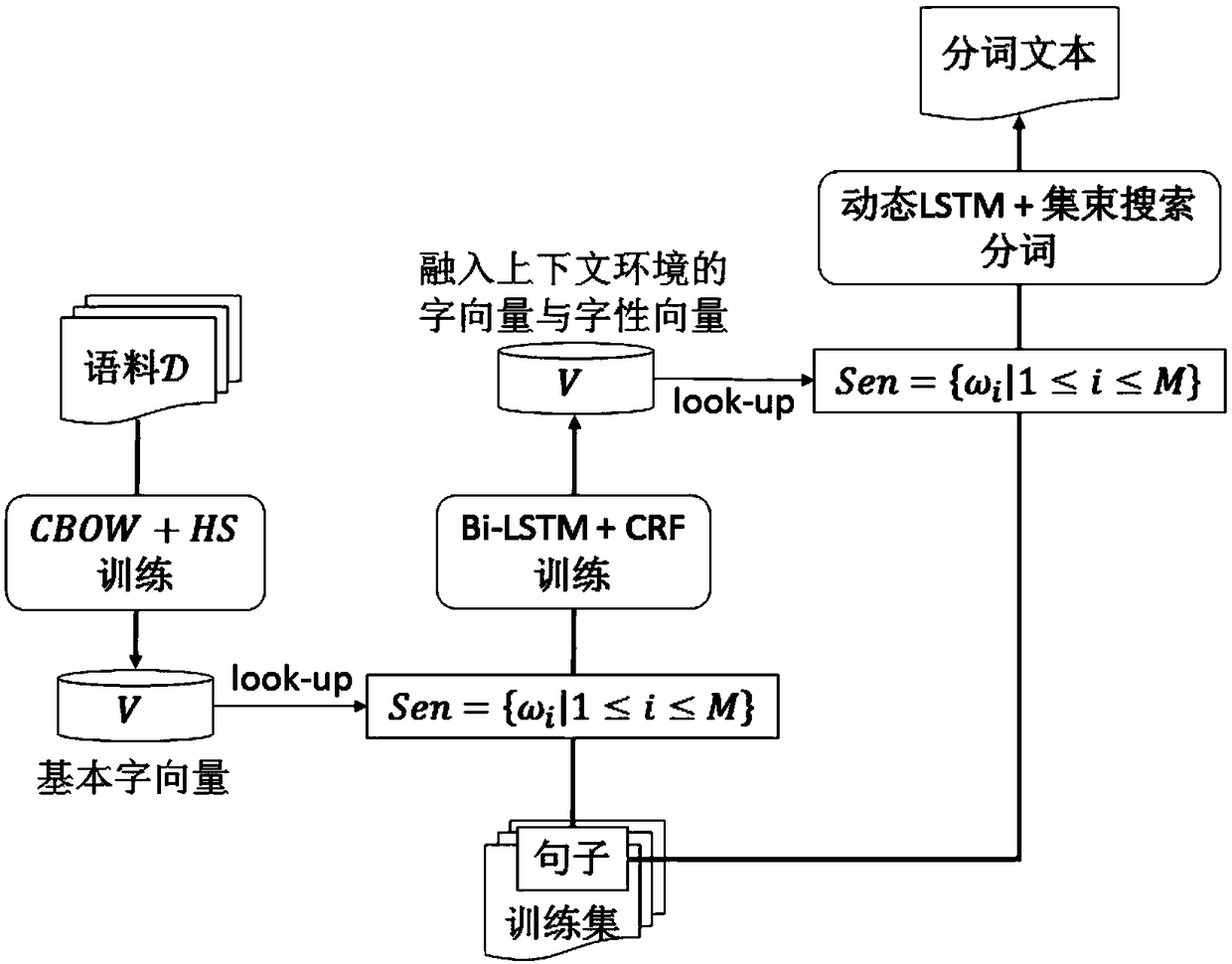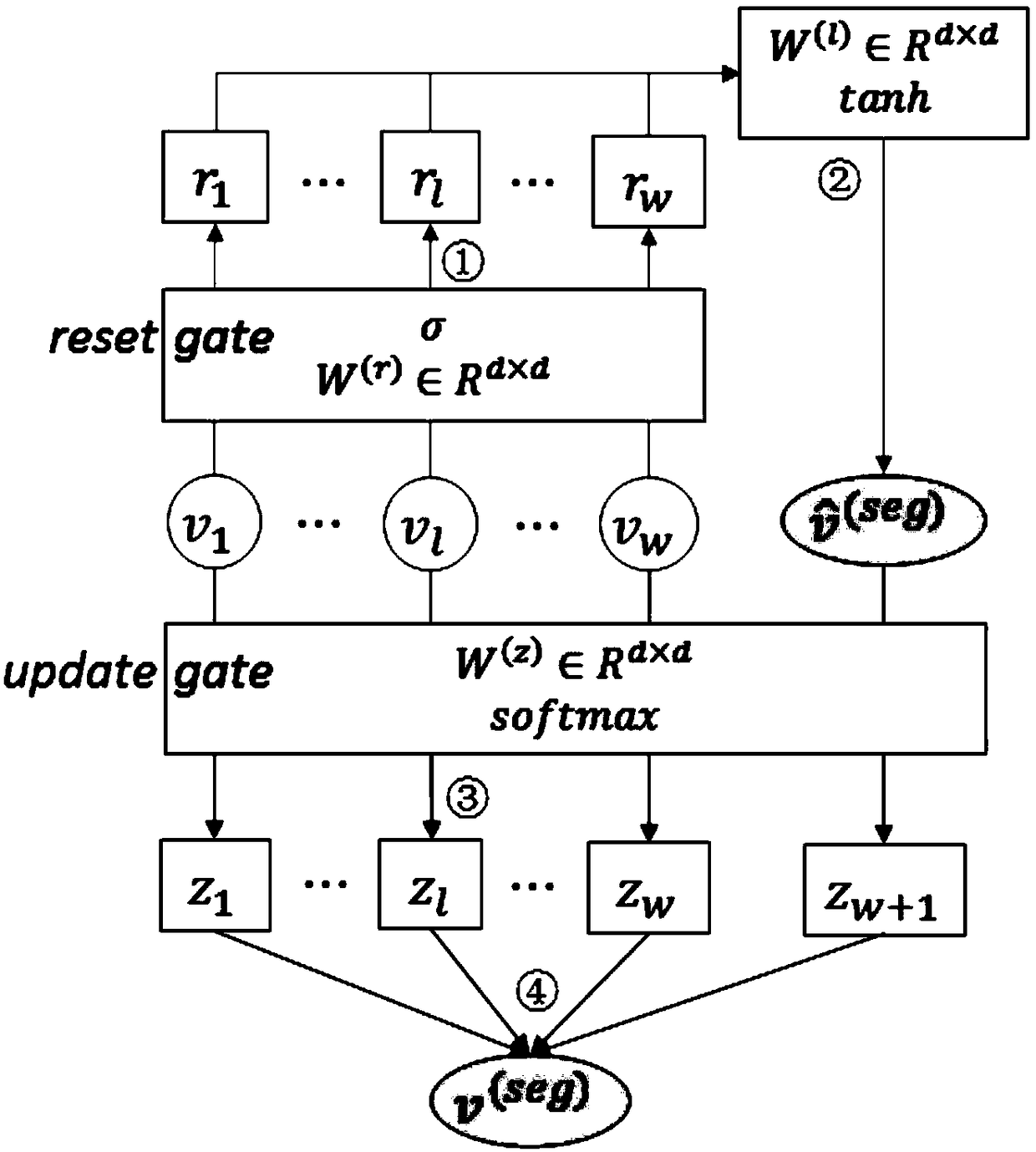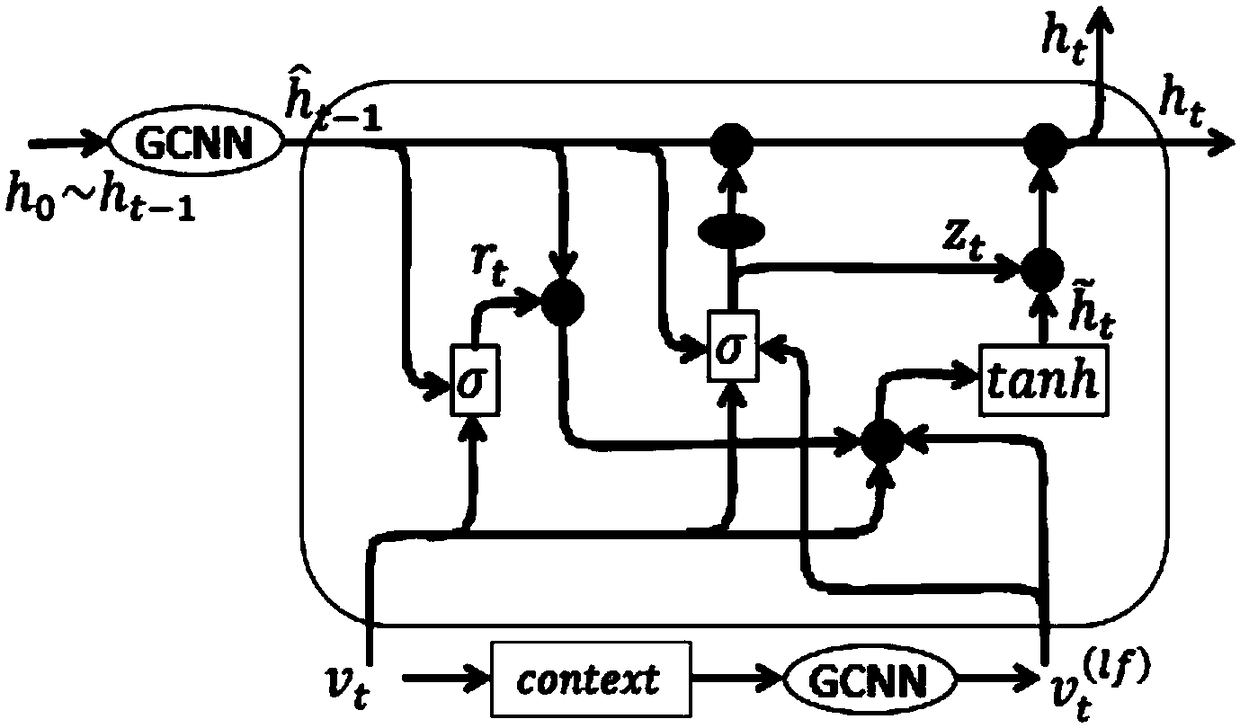A Chinese word segmentation method based on depth learning
A deep learning and Chinese word segmentation technology, which is applied to instruments, biological neural network models, calculations, etc., can solve the problems of recurrent neural network gradient explosion, inability to handle long-distance historical memory, and inability to learn data association well.
- Summary
- Abstract
- Description
- Claims
- Application Information
AI Technical Summary
Problems solved by technology
Method used
Image
Examples
Embodiment 1
[0252] A Chinese word segmentation method based on deep learning, comprising the steps of:
[0253] Step 1: Perform literal word frequency statistics on the large-scale corpus D. Based on the CBOW model and HS training method, initialize each word in the corpus D as a basic distributed literal vector, and index the acquired literal vector Save into dictionary V.
[0254] Step 2: Convert the training corpus into fixed-length vectors sentence by sentence, and send them into the improved bidirectional LSTM model. By training the parameters in the bidirectional LSTM model, refine and update the character-level literal vectors in the dictionary V to obtain A feature vector carrying contextual semantics and a vector containing literal features.
[0255] Step 3: For each training sentence, when training word by word, use the idea of full segmentation to segment all candidate words ending with the current word within the maximum word length, and fuse the refined character-level fea...
PUM
 Login to View More
Login to View More Abstract
Description
Claims
Application Information
 Login to View More
Login to View More - R&D
- Intellectual Property
- Life Sciences
- Materials
- Tech Scout
- Unparalleled Data Quality
- Higher Quality Content
- 60% Fewer Hallucinations
Browse by: Latest US Patents, China's latest patents, Technical Efficacy Thesaurus, Application Domain, Technology Topic, Popular Technical Reports.
© 2025 PatSnap. All rights reserved.Legal|Privacy policy|Modern Slavery Act Transparency Statement|Sitemap|About US| Contact US: help@patsnap.com



